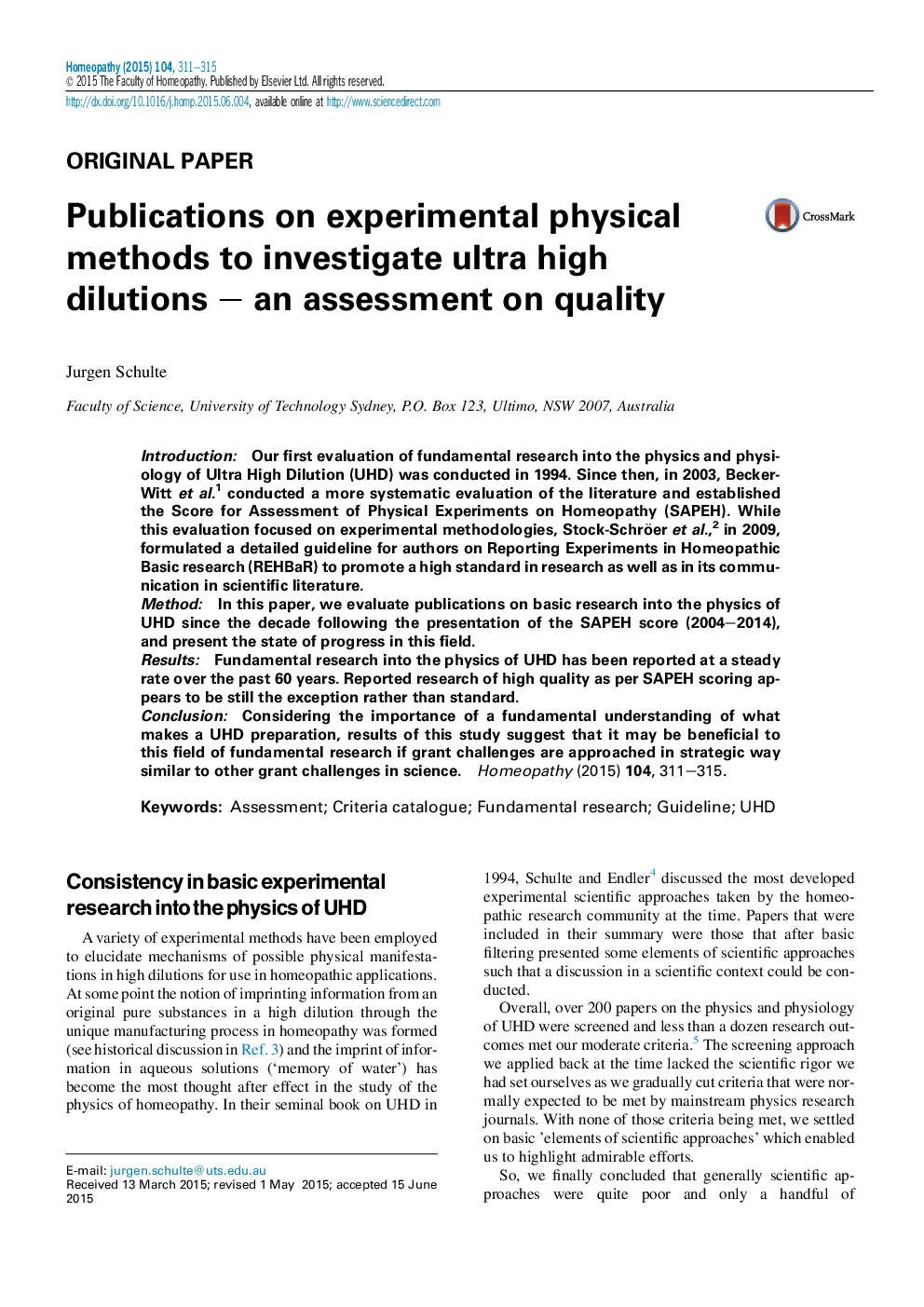| Article ID | Journal | Published Year | Pages | File Type |
|---|---|---|---|---|
| 2629812 | Homeopathy | 2015 | 5 Pages |
•Our first evaluation of fundamental research into the physics of UHD was conducted in 1994.•Becker-Witt et al. conducted a more systematic evaluation of the literature in 2003.•Stock- Schröer et al. formulated a detailed guideline for authors in 2009.•Here, we evaluate publications on basic research into the physics of UHD between 2004–2014.
IntroductionOur first evaluation of fundamental research into the physics and physiology of Ultra High Dilution (UHD) was conducted in 1994. Since then, in 2003, Becker-Witt et al.1 conducted a more systematic evaluation of the literature and established the Score for Assessment of Physical Experiments on Homeopathy (SAPEH). While this evaluation focused on experimental methodologies, Stock-Schröer et al.,2 in 2009, formulated a detailed guideline for authors on Reporting Experiments in Homeopathic Basic research (REHBaR) to promote a high standard in research as well as in its communication in scientific literature.MethodIn this paper, we evaluate publications on basic research into the physics of UHD since the decade following the presentation of the SAPEH score (2004–2014), and present the state of progress in this field.ResultsFundamental research into the physics of UHD has been reported at a steady rate over the past 60 years. Reported research of high quality as per SAPEH scoring appears to be still the exception rather than standard.ConclusionConsidering the importance of a fundamental understanding of what makes a UHD preparation, results of this study suggest that it may be beneficial to this field of fundamental research if grant challenges are approached in strategic way similar to other grant challenges in science.
